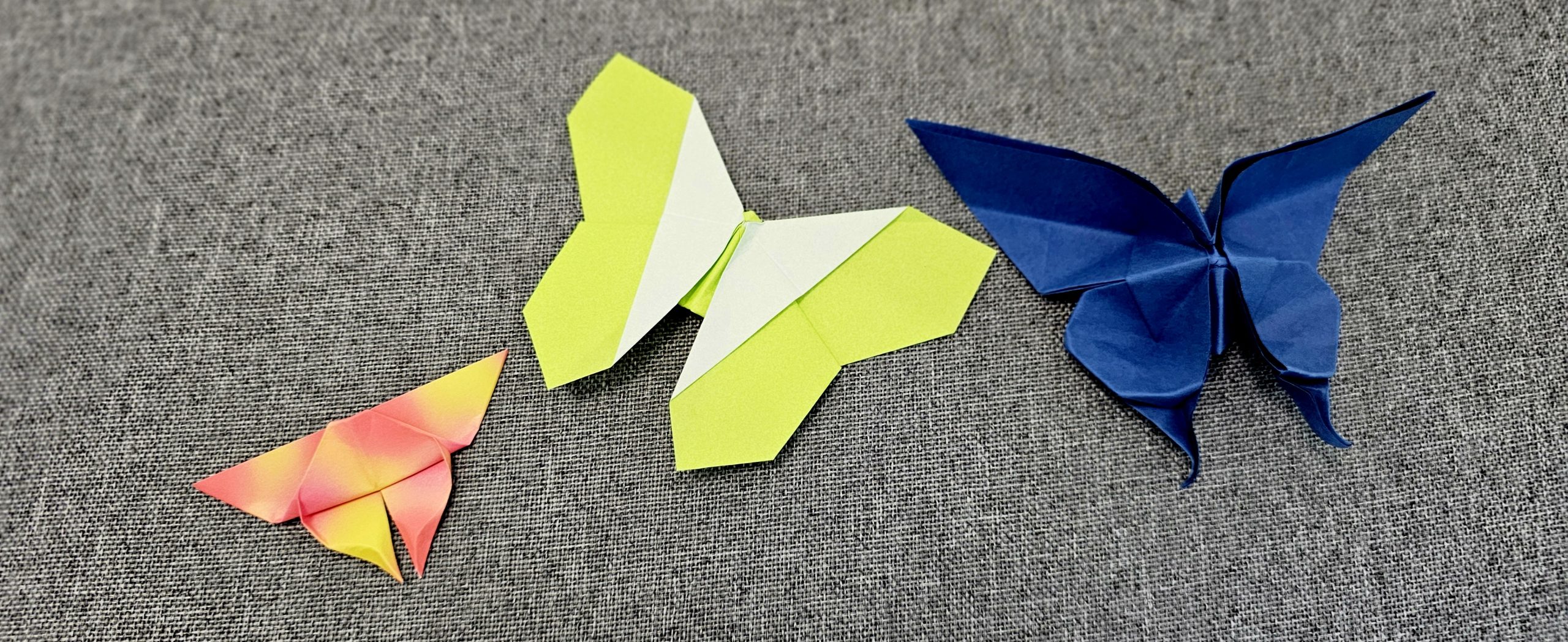When I ask people to identify a symbolic representation of transformation, the butterfly is often the most common response. The metamorphosis of a butterfly from caterpillar to winged insect resonates deeply with many—it serves as a powerful metaphor for growth, change, and the unveiling of hidden potential.
To further reinforce this idea of transformation, I frequently use the butterfly as an iconic image. In the Origamic Transformation™ workshops, folding an origami butterfly becomes an essential skill for any facilitator, as it embodies the very principles we are exploring.
When it comes to the origami crane, I suspect you and I share a similar mental image. The graceful, elongated shape of the paper crane is one of the most universally recognized origami figures. However, when we shift our focus to the origami butterfly, the landscape becomes much more diverse and varied.
There is a actually many beautiful butterfly designs in the world of origami—some abstract and stylized, while others are more realistic and lifelike. The complexity of these designs can range widely, from relatively simple folds to remarkably intricate creations. A quick search online or a look through origami books reveals dozens of common, widely published butterfly models, along with many more obscure or specialized designs.
This abundance of options for the origami butterfly draws an interesting parallel to our approach to problem-solving and decision-making in daily life. Are we often too fixated on our usual or default methods, even when the context has shifted? Do we reflexively resort to familiar solutions, even when more suitable or innovative options are available?
The origami butterfly, with its myriad interpretations and folding techniques, serves as a compelling metaphor for cultivating flexibility and adaptability in our mindsets. Rather than defaulting to a single “right way” of doing things, we can benefit from broadening our perspectives, exploring alternative approaches, and remaining open to diverse pathways to achieve our goals.
Just as there is no single “correct” way to fold an origami butterfly, the solutions to our real-world challenges may lie in embracing a multiplicity of approaches. By staying curious, open-minded, and willing to experiment, we enhance our chances of discovering the most appropriate and transformative way forward—one fold at a time.
When you face a problem, do you really consider more than one possible solutions?
